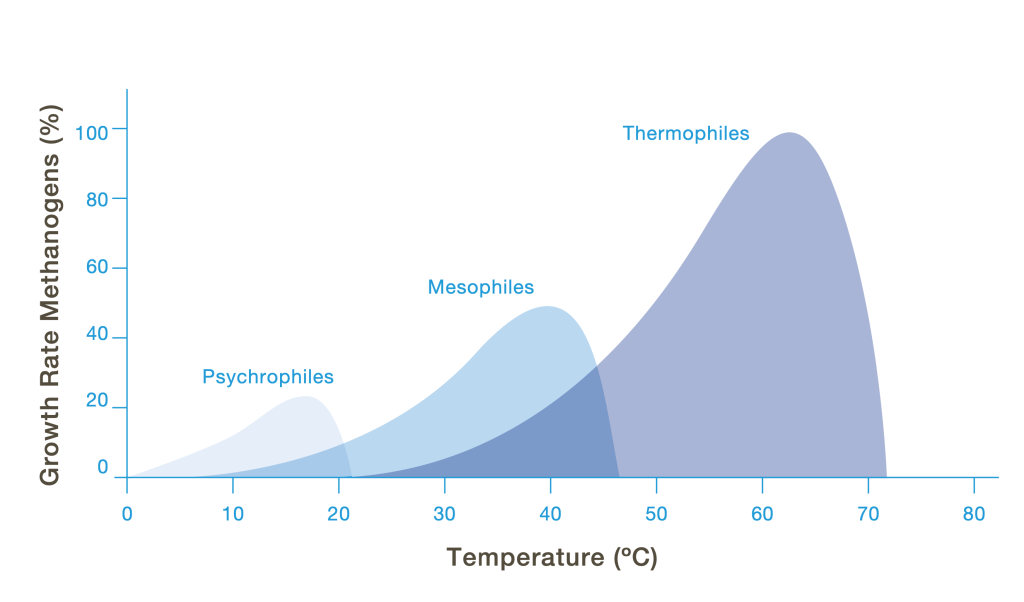3.2 Temperature
Temperature has a significant impact on biological processes. It affects the growth rate of organisms, their nutritional needs, how their cells work, and overall metabolism. Because the methanogenic microorganisms have a slower growth rate and have a central role in the anaerobic digestion process, they are divided into three categories based on their temperature preferences:
→ Psychrophilic (<20 °C) → Mesophilic (20–40 °C) → Thermophilic (50–70 °C)

Lower temperatures can hinder microbial activity and reduce biogas production. In areas with seasonal temperatures below 15°C, unheated anaerobic digesters may not be suitable. However, insulation and extending the retention time can partially compensate for the effects of low temperatures. Considering practical limitations and the potential impact on biogas production efficiency in such conditions is essential.

In general, the mesophilic temperature range provides more process stability due to the greater diversity of microorganisms. On the other hand, the thermophilic temperature range promotes higher growth rates and increased biogas production, but it is less stable due to the reduced diversity of the microorganisms present.
While it is desirable to have higher temperatures, maintaining a consistent temperature within the reactor is essential for the successful operation of an anaerobic system. The anaerobic process is sensitive to sudden temperature fluctuations, including day and night variations, which can adversely affect the system’s performance. To mitigate these effects, digesters built underground leverage the temperature buffer capacity of the soil, helping to minimise temperature fluctuations and maintain stability within the AD system.
